Tags provide another way to organize your notes beyond libraries & notebooks. They are super helpful for bringing together notes across notebooks that relate to the same project. So you could, for example, consolidate notes across Product, Marketing, and Sales notebooks with a single #project-gemini tag. They are also great for marking specific notes for quicker retrieval. You could, say, create a #to-read tag to remind yourself of clips and content you want to remember to read. Tags are even great for providing status or call-to-actions to your team. Say a #feedback-welcome tag when you are looking for feedback from your team.
Some choose to organize their notes entirely by tags or through a combination of notebooks and tags. The choice is entirely up to you.
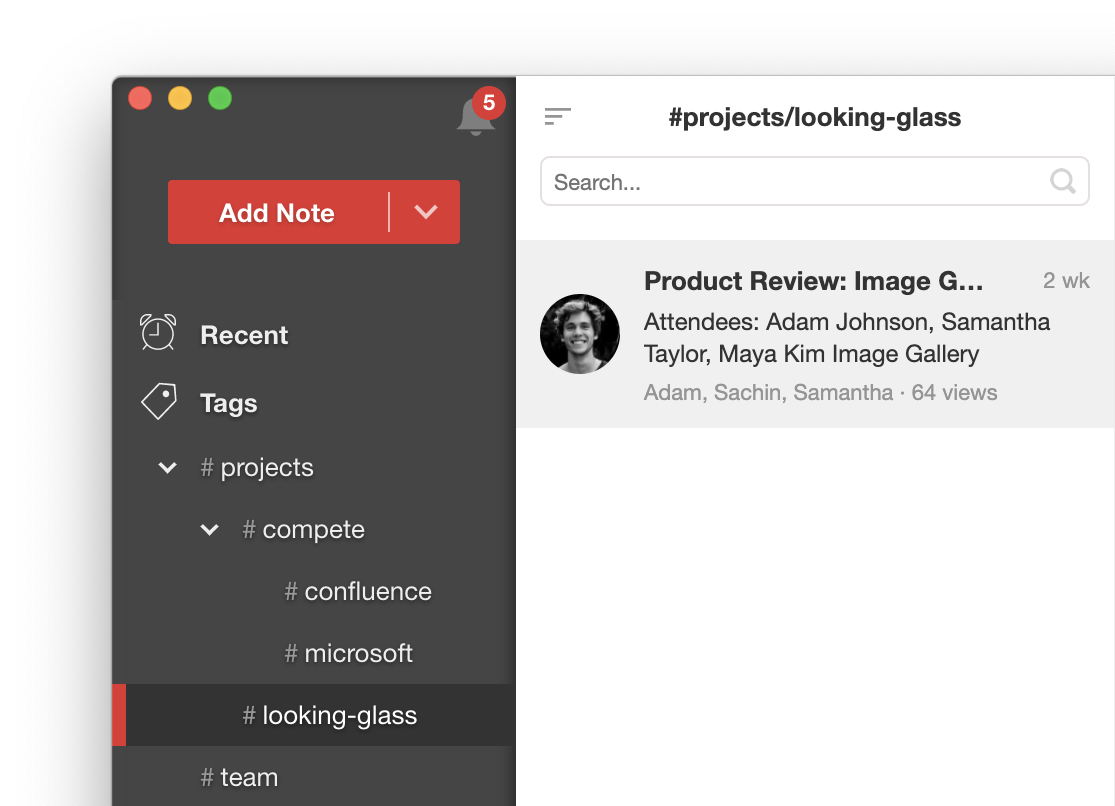
Adding Tags
To add a tag to a note, simply type a hash followed by your tag name (ex: #project-gemini) in the note title or anywhere in the note body. You can include as many tags as you like in either or both locations. You can use any non-space character in your tag name, including dashes, periods, and more.
As you start typing your tag in a note, you'll see an autocomplete that makes it easy to quickly apply an existing tag to your note. It also helps avoid duplicate tags.
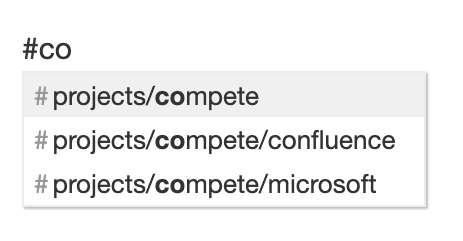
Alternatively, to apply an existing tag you can also drag and drop a note over the tag in the sidebar to quickly add it to the end of the note title.
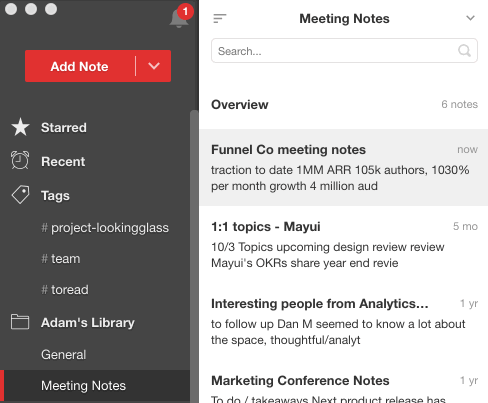
Nested Tags
You can also create nested tags, allowing you to easily build a hierarchy of tags to organize your notes. To create a nested tag, just add a forward slash separating the child tag in your hashtag. For example, #projects/compete will create a "compete" nested tag underneath "projects". You can create a hierarchy of nested tags as deep as you need to organize your notes. If you haven't previously used a parent tag, Notejoy will automatically add the parent tag for you.
Browsing Tags
Once you've added a tag to a note, the tag will show up in the tags section in the sidebar. Tags will be displayed alphabetically in the sidebar and will be shown lower case regardless of how you type them in your note. Notejoy will show up to 1,000 tags in the sidebar. Notejoy allows you to collapse nested tags as well as collapse the entire tag section and will remember your preference. Clicking on a tag will allow you to browse tagged notes, sorted by last modified date by default. However, you can change the notes sort to alphabetical or by created date and your preference will be remembered for each tag.

Searching Tags
You can also search directly for your tag (ex: #tag) to quickly get back to all notes with the tag. Or refine your search even further by including keywords alongside your tag to find notes with both your tag and search terms. When you search for multiple tags, you'll only be shown notes that have both tags in it, helping you to narrow your search to find exactly what you are looking for.
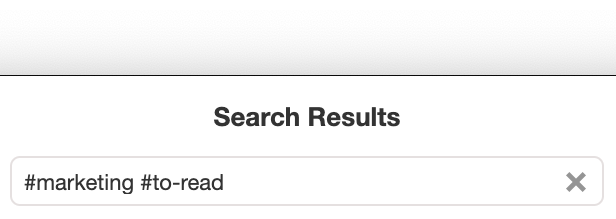
Renaming Tags
You can easily rename a tag just by right-clicking on it in the sidebar and selecting Rename. This will automatically find all occurrences of the tag in your notes and update them instantly.
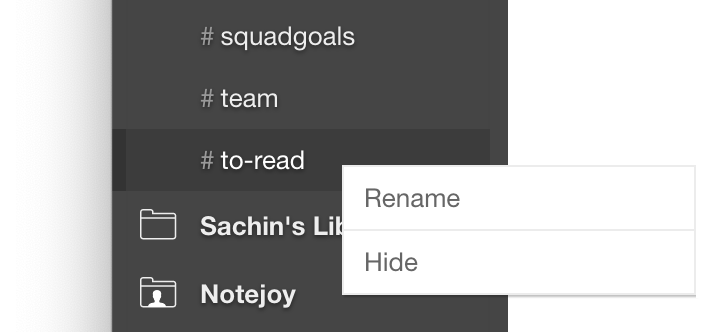
Moving Tags
You can also easily move a tag in your tag hierarchy by simply dragging and dropping it to it's new destination. So if you want to nest a tag, just drag it over the new parent tag. Or if you want to convert a tag to a top-level tag, just drag it over the Tags header.
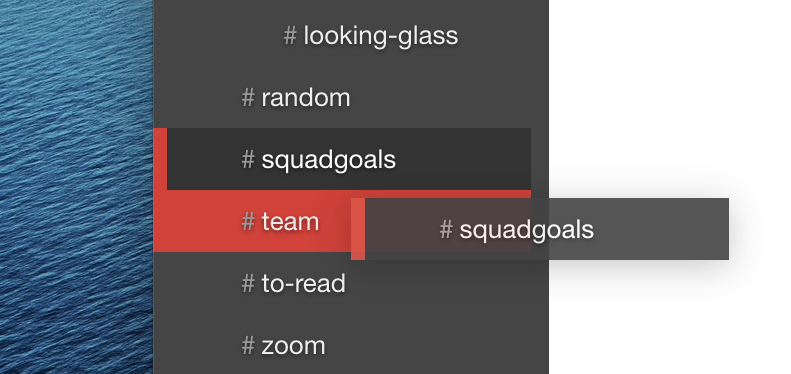
Finding Untagged Notes
You can search for untagged notes by adding "is:untagged" to your query. This helps you find notes that you may want to add tags to. You can also combine this with any of Notejoy's other search operators or keywords.
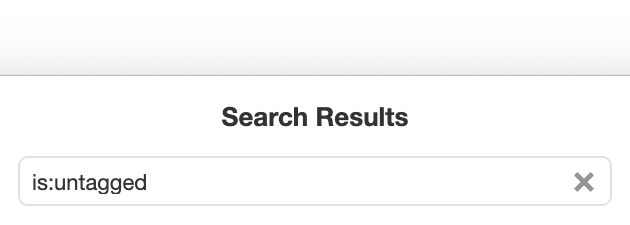
Ignoring Tags
Notejoy ignores tags that are just numbers (#1, #12, etc) since it's unlikely the intent is to add a tag. Notejoy also ignores any tags inside of code blocks. And if you ever want to ignore tags in a note entirely, just add #ignoretags anywhere in the note.
Hiding Tags
If you find certain tags not relevant to you, you can simply hide them by right-clicking on them in the sidebar and selecting hide. This is faster than removing the hashtag from each note.
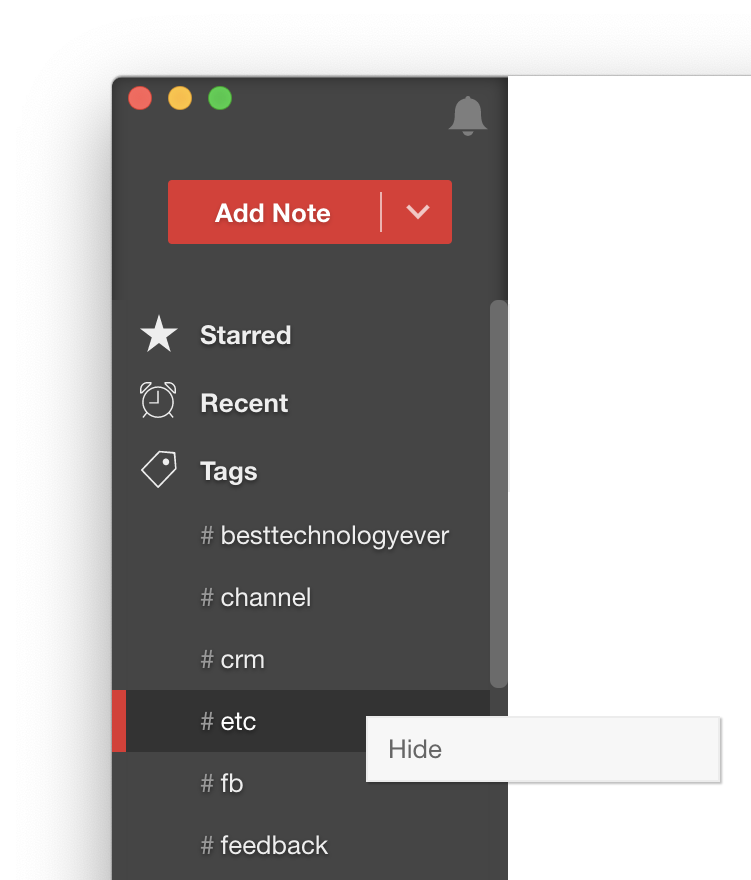
And if you ever need to bring the tag back, you can do so from Tag Settings.
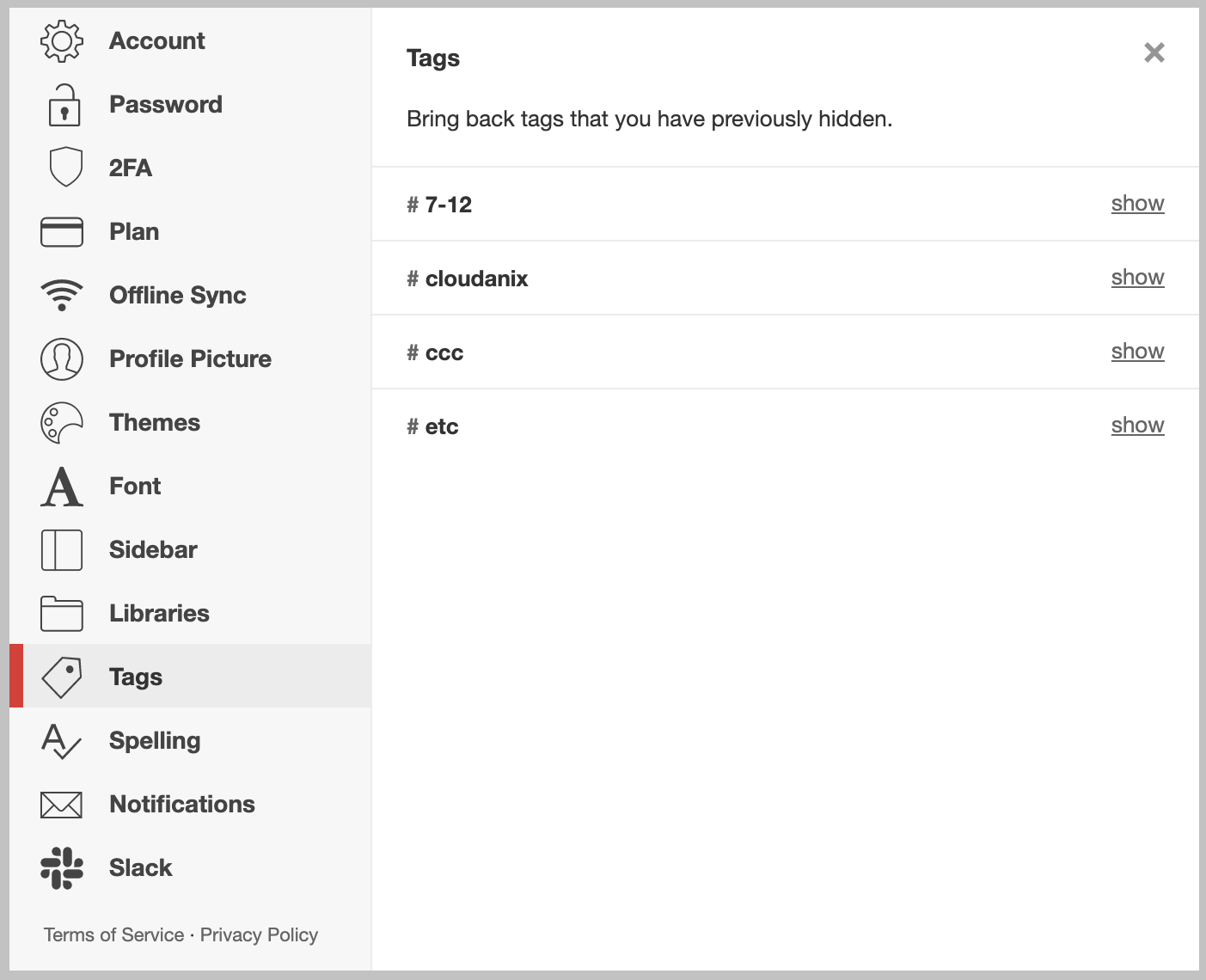
Team Tags
Tags are seen by anyone who has access to the note containing the tag. So if you add tags to a note in a team library, everyone in the team library will see the tag show up in their tags list in the sidebar and be able to see all tagged notes they have access to. If you use tags just in your personal libraries, those tags will only ever be visible to you.